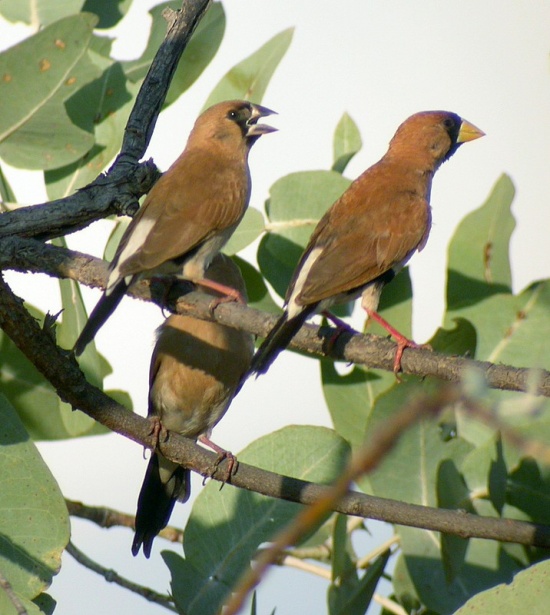m |
|||
| Line 1: | Line 1: | ||
;Poephila personata | ;Poephila personata | ||
| − | [[Image:Masked_Finch.jpg|thumb| | + | [[Image:Masked_Finch.jpg|thumb|550px|right|Photo by Mat & Cathy]] |
==Identification== | ==Identification== | ||
Locality: Wyndham, N. Western Australia. Adult with yellow bill, immature with black. | Locality: Wyndham, N. Western Australia. Adult with yellow bill, immature with black. | ||
| + | |||
| + | |||
| + | The Masked Finch Poephila personata is a common resident of dry savanna across northern Australia, from the Kimberley, across the Top End, the Gulf country and the southern part of Cape York Peninsula, as far east as Chillagoe, but always near water. | ||
| + | |||
| + | Pairs or small flocks forage through the day, mostly on the ground for fallen grass seeds. In the evenings and early mornings, large numbers—sometimes thousands— can gather around waterholes to drink, bathe, and preen, flicking their tails sideways and chattering incessantly. | ||
| + | |||
| + | Sexes are similar. Pairs build a domed nest from grasses, lined with fine grass, feathers, and charcoal, in the late wet season or early dry. The nest position varies: it can be as high as 20 metres or simply hidden in long grass. Five to six white eggs are laid. | ||
| + | |||
| + | |||
==External Links== | ==External Links== | ||
[[Category:Birds]] | [[Category:Birds]] | ||
Revision as of 12:36, 22 May 2007
- Poephila personata
Identification
Locality: Wyndham, N. Western Australia. Adult with yellow bill, immature with black.
The Masked Finch Poephila personata is a common resident of dry savanna across northern Australia, from the Kimberley, across the Top End, the Gulf country and the southern part of Cape York Peninsula, as far east as Chillagoe, but always near water.
Pairs or small flocks forage through the day, mostly on the ground for fallen grass seeds. In the evenings and early mornings, large numbers—sometimes thousands— can gather around waterholes to drink, bathe, and preen, flicking their tails sideways and chattering incessantly.
Sexes are similar. Pairs build a domed nest from grasses, lined with fine grass, feathers, and charcoal, in the late wet season or early dry. The nest position varies: it can be as high as 20 metres or simply hidden in long grass. Five to six white eggs are laid.




